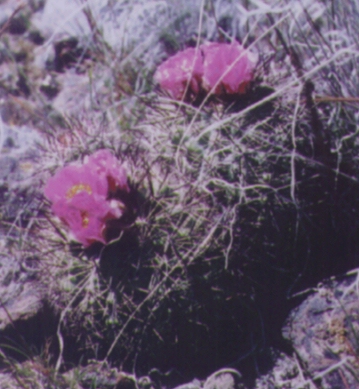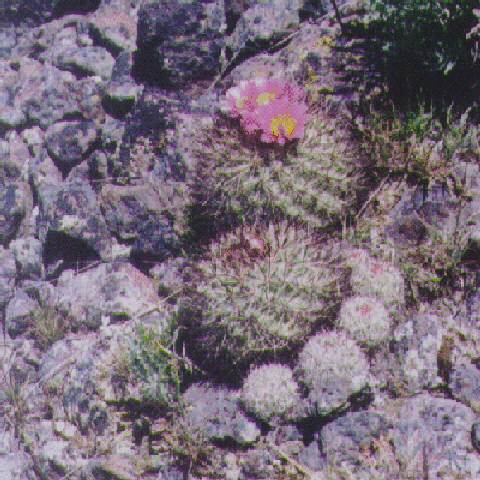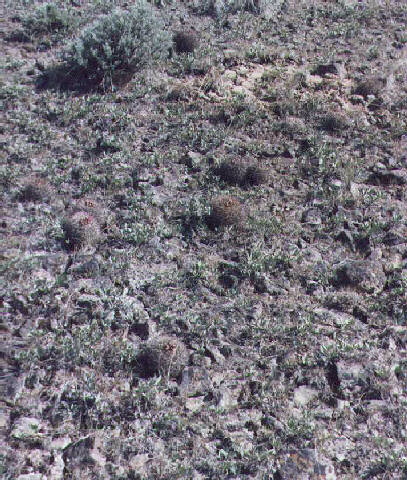 included,
however study showed that it was more common than previously thought, so
it was removed from the list of Endangered, Threatened & Sensitive
Vascular Plants of Washington.
included,
however study showed that it was more common than previously thought, so
it was removed from the list of Endangered, Threatened & Sensitive
Vascular Plants of Washington. Pediocactus nigrispinus ???
This little cactus which looks like it would be more at home in the deserts of Nevada than the dry slopes of Washington is unfortunately more often seen in roadside flea markets where they grace cheap Mexican pots for a single season. They do not do well in the garden and the "poaching" of the plants is the most serious threat to the species.
When the natural heritage plan for the State of Washington
was begun the Hedgehog Cactus was  included,
however study showed that it was more common than previously thought, so
it was removed from the list of Endangered, Threatened & Sensitive
Vascular Plants of Washington.
included,
however study showed that it was more common than previously thought, so
it was removed from the list of Endangered, Threatened & Sensitive
Vascular Plants of Washington.
These plants are still very common in the hills north of Quincy. The bloom time is around the middle of April to early May. They are found on the southern slopes, where the hills begin to slope and the soil is very thin.
The name Pedio is said to come from the Greek word field. However, looking at the picture below, it is fun to think that the root might refer to children.
The little family of cacti, which one of the members of
this years hike to the Beezley Hills referred to as the Petey O'Cactus
family has been one of my favorite plants for the past ten  years.
These plants are found in an area that is very thick with the beautiful
sagebrush violets, Viola trinervata.
The violets usually finish blooming just before the cacti begin blooming.
years.
These plants are found in an area that is very thick with the beautiful
sagebrush violets, Viola trinervata.
The violets usually finish blooming just before the cacti begin blooming.
In the time I have been visiting the area I have seen an increase in the numbers of cacti. Luckily most of the plants are not found very close to the road. One patch which unfortunately has a jeep trail right to it has had most of the larger specimens removed. I haven't seen any "poachers" in the last three years in the area though and the smaller plants that remain are starting to get closer to the size of the mature plants which had been removed.
Name this plant. On July 27, 1996, I answered a simple question of where in the State a person could see the native cacti. It referenced this page which of course brought out the experts as to the proper identification of the plant. The resulting E-mail.

This is a photo of the typical habitat that the Pediocatus
are found in the Monument Hill area north of Quincy Washington
